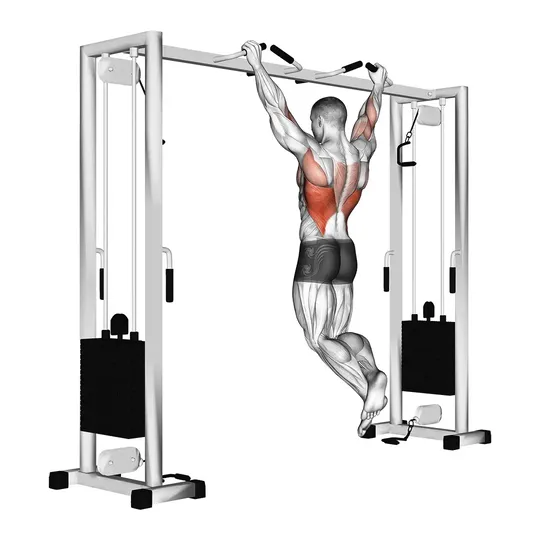Body Weight Pull Up

Introduction to Body Weight Pull Ups
The body weight pull up is a popular and effective upper body exercise that targets multiple muscle groups simultaneously. Not only does it enhance upper body strength, but it also improves grip strength and contributes to better posture. This staple exercise can be performed using a pull-up bar and is widely used in various fitness routines, from bodybuilding to CrossFit.
Muscles Involved
Pull ups primarily engage the following muscle groups:
- Latissimus Dorsi: The primary muscle responsible for the pulling motion.
- Biceps Brachii: Works along with the broader back muscles to facilitate the pull.
- Rhomboids: Helps in retracting the scapula, which stabilizes the shoulder girdle.
- Trapezius: Supports the upper back and neck during the pull.
- Forearms: Engaged for grip strength and stability throughout the movement.
Top Mistakes
When performing pull ups, avoiding common mistakes is key to maximizing effectiveness and minimizing injury risks. Here are a few pitfalls to watch out for:
- Improper Grip: Holding the bar incorrectly can strain your wrists and reduce your ability to pull up effectively.
- Swaying or Kipping: Using momentum undermines the strength-building benefits of the exercise.
- Not Engaging Core: Failure to stabilize your core can lead to arching of the back, increasing the risk of injury.
Execution Tips
Performing body weight pull ups correctly is crucial for ensuring safety and effectiveness. Here are some execution tips:
- Warm Up: Always warm up your upper body before starting to prevent injuries.
- Grip Width: Choose a shoulder-width or slightly wider grip for maximum engagement of the target muscles.
- Controlled Movement: Control both the ascent and descent to enhance muscle engagement.
- Full Range of Motion: Start with arms fully extended and pull up until your chin surpasses the bar.
Workouts
To incorporate pull ups into your workout routine, consider the following:
- Beginner: Assisted pull ups using resistance bands or a pull-up machine.
- Intermediate: Perform sets of 5-10 pull ups, aiming for 3-4 sets.
- Advanced: Try variations like weighted pull ups or muscle-ups for added challenge.
Conclusion
The body weight pull up is an essential exercise that builds strength in the upper body and engages multiple muscle groups. By understanding the muscles involved, avoiding common mistakes, employing proper techniques, and integrating pull ups effectively into your workouts, you can significantly enhance your overall fitness. With persistence and practice, anyone can see progress, making the pull up a rewarding addition to any fitness regimen.



